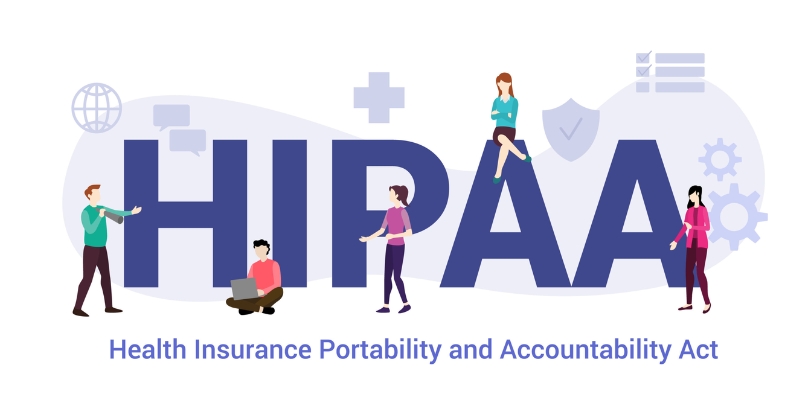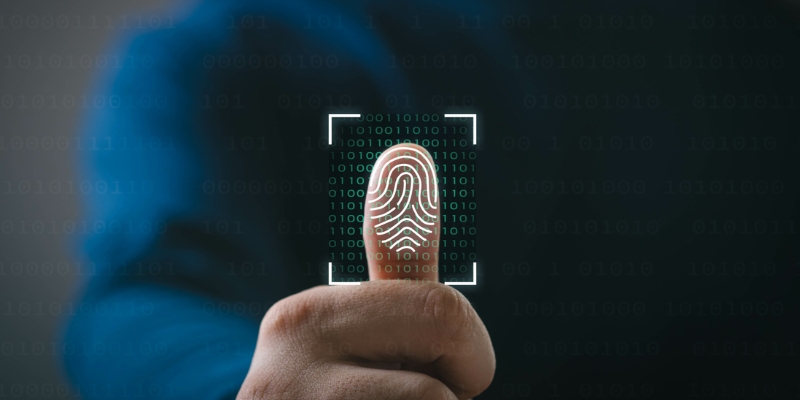Lucia Lee
Last update: 15/04/2025
In an age where healthcare runs on data, healthcare data security has never been more critical and more complex. From electronic health records to wearable health devices, the healthcare industry is generating more sensitive information than ever before. With this growth comes new threats, making patient data protection a top priority for organizations. In this post, we’ll explore the key future trends of healthcare data security and what they mean for providers, patients, and tech innovators alike.
Healthcare data security is the practice of safeguarding sensitive medical information and the systems that store and transmit it, such as electronic health records (EHRs), networks, and connected devices - against unauthorized access, misuse, or breaches. In a digital-first healthcare environment, protecting patient data goes beyond just locking down information; it involves securing every touchpoint, from hospital databases to mobile devices used by practitioners and third-party partners.
Effective healthcare data security relies on implementing robust cybersecurity measures to ensure three key principles: confidentiality (preventing unauthorized disclosure), integrity (ensuring data accuracy and consistency), and availability (ensuring data is accessible to authorized users when needed). As the healthcare industry becomes increasingly interconnected, implementing advanced cybersecurity measures is essential not only for healthcare compliance but also for preserving patient trust and ensuring uninterrupted care delivery.
Before diving into the future trends of healthcare data security, we should understand why it is important in the first place. There are various reasons why healthcare data security should stay on the top of any healthcare organization’s agenda. Let’s have a closer look:
Protection of sensitive patient information
Healthcare organizations manage highly sensitive data, including medical histories, diagnoses, treatment plans, insurance records, and personal identifiers like Social Security numbers. If compromised, this data can be used for identity theft and other fraudulent activities, shattering patient trust. Therefore, safeguarding it is crucial to protect individuals’ privacy and prevent serious harm to your organization’s reputation.
Regulatory compliance requirements
The healthcare industry is highly regulated, with laws like the Health Insurance Portability and Accountability Act (HIPAA) mandating strict standards for data protection. Failing to meet these regulations can result in heavy fines and legal consequences - risks no healthcare organization wants to take.

Regulatory compliance requirements
Rising cybersecurity threats and breaches
With the expansion of telehealth services, cyberattacks have become more frequent and complex. In fact, 92% of healthcare enterprises experienced a cyberattack in 2024, up from 88% in 2023, according to the 2024 Ponemon Healthcare Cybersecurity Report. Cybercriminals see healthcare data as extremely valuable, often selling stolen records on the dark web or holding them for ransom.
Impact on patient safety and care quality
Cyberattacks can directly compromise patient care. If systems are locked or patient data is corrupted, it can delay urgent procedures, result in misdiagnoses, or prevent access to critical medical information. In emergency cases, these disruptions could lead to life-threatening situations.
Financial and reputational damage
A single data breach can cost healthcare providers millions in recovery, legal fees, and penalties. Additionally, losing patient trust due to poor data protection can harm a provider’s reputation long-term, making it harder to retain and attract patients.
Inadequate cybersecurity infrastructure
Many healthcare organizations, especially small clinics, still rely on outdated legacy systems that lack basic protections. Features like data encryption and access controls are often missing, making it easier for attackers to gain access. Poor cybersecurity risk management and lack of staff awareness further increase vulnerability.
High ransom payout incentives
Due to the critical nature of healthcare services, providers cannot afford extended downtimes. This urgency makes them more likely to pay large ransoms quickly, further encouraging cybercriminals to target the sector.

High ransom payout incentives
Risks from third-party vendors
Healthcare providers often work with numerous third-party services for billing, diagnostics, and data processing. Each third-party connection represents a potential entry point for attackers, increasing the likelihood of supply chain attacks.
As healthcare cybersecurity risks are increasingly complicated, healthcare data security measures must evolve to stay ahead of the threats. Below are the key future trends of healthcare data security to look out for.
Increased adoption of Artificial Intelligence (AI)
AI in security is revolutionizing how healthcare organizations detect and respond to cyber threats. AI technologies can process vast datasets from different sources, such as network logs, user behavior, and access patterns, to identify signs of potential breaches in real-time.
For example, ML (machine learning - a branch of AI) algorithms can flag logins during odd hours or from unfamiliar locations as anomalies, triggering alerts or automatic responses. As cyber threats become faster and more complex, the proactive capabilities of AI and ML will be crucial in predicting, preventing, and neutralizing attacks before they cause damage.
Also read: AI in Healthcare: Improving Patient Care and Medical Practice
Shift toward zero trust architecture
The traditional perimeter-based security model is no longer effective against modern threats. The Zero Trust approach is one of the key future trends of healthcare data security that assumes that no user or device, inside or outside the network, should be trusted by default. Every access request must be verified using strict identity and access management (IAM) protocols.
In healthcare, Zero Trust means that staff can only access data necessary for their roles, and that systems are constantly monitored for suspicious activity. Implementing this architecture helps prevent lateral movement within networks and limits the scope of potential breaches.

Shift toward zero trust architecture
Expansion of cloud security solutions
As cloud-based healthcare solutions - such as electronic health records (EHRs) and telehealth platforms - are becoming prevalent, securing these environments becomes critical. This includes encrypting data at rest and in transit, using multifactor authentication (MFA), and applying continuous security monitoring.
Many organizations are also adopting hybrid cloud models, combining public and private cloud infrastructure for more flexibility and control. Cloud security strategies must extend beyond the provider’s tools and include internal policies, risk assessments, and employee training.
Enhanced protection for Internet of Medical Things (IoMT)
IoMT refers to the network of connected medical devices like pacemakers, infusion pumps, wearable monitors, and imaging equipment. While these devices improve diagnostics and patient monitoring, they often lack built-in security features, making them vulnerable to cyberattacks.
Future trends of healthcare data security will focus on integrating IoMT into secure networks, deploying software updates more frequently, implementing strong device authentication, and using network segmentation to isolate these devices from critical systems.
Greater emphasis on regulatory compliance
With rising concerns about data privacy and increasing digital threats, governments and regulatory bodies have introduced stricter laws. Frameworks such as the Health Insurance Portability and Accountability Act (HIPAA) in the U.S. and the General Data Protection Regulation (GDPR) in Europe impose heavy fines for data breaches and non-compliance.
Healthcare organizations are now integrating security frameworks that include regular audits, risk assessments, and data governance models to meet regulatory requirements and protect patient trust.
Adoption of blockchain for secure data sharing
Blockchain’s decentralized and tamper-evident architecture makes it an ideal tool for securing healthcare data. It allows patient records to be stored in a distributed ledger, where every change is traceable and transparent. This prevents unauthorized modifications and ensures data integrity.
Blockchain can also simplify consent management, giving patients more control over who accesses their data, and enabling secure sharing between providers without compromising confidentiality.
Growth of biometric authentication
Traditional passwords are easily compromised through phishing or brute-force attacks. Biometric authentication - such as fingerprint scans, facial recognition, and iris detection, offers a more secure and user-friendly alternative. In a healthcare setting, biometrics can be used to restrict access to EHRs, medication dispensing systems, and even physical locations. As the technology becomes more accurate and affordable, it will become one of the prevalent future trends of healthcare data security.

Growth of biometric authentication
Emergence of quantum cryptography
Quantum cryptography, based on the principles of quantum mechanics, introduces encryption methods that are theoretically unbreakable. Though still in its early stages, it holds immense promise for healthcare security.
As cybercriminals gain access to more powerful computing resources, traditional encryption methods may no longer be effective. Quantum key distribution (QKD) could ensure that sensitive medical data remains secure, even in the face of future cyber threats.
Real-time threat intelligence sharing
Sharing threat intelligence among healthcare organizations, security firms, and government agencies can significantly improve response times and reduce damage from cyberattacks. Collaborative platforms enable institutions to exchange data about vulnerabilities, attack methods, and indicators of compromise (IOCs). This collective defense model allows organizations to anticipate attacks, apply patches quickly, and implement preventative measures based on the latest threat landscape.
Integration of privacy-enhancing technologies (PETs)
PETs such as homomorphic encryption and secure multi-party computation (SMPC) allow data to be analyzed and processed without revealing the actual content. In healthcare, this means that sensitive patient data can be used in research, diagnostics, and public health analytics without compromising privacy. For example, hospitals can collaborate on treatment effectiveness studies using encrypted datasets, minimizing data exposure while still enabling valuable insights.
Patient-centric privacy innovations
Patients today expect more control over their personal health information, which is a crucial aspect of personalized healthcare. Privacy-focused solutions like consent management tools and digital privacy dashboards are becoming essential. These tools allow patients to decide who can access their records, for how long, and for what purpose. Such transparency not only builds trust but also supports compliance with data protection laws and ethical standards in healthcare.
Emphasis on employee training and cyber awareness
Employees remain one of the most common entry points for cyberattacks, especially through phishing and social engineering tactics. Even a well-secured system can be compromised by a single careless click. To counter this, healthcare organizations are investing in ongoing cybersecurity education, covering topics like recognizing phishing emails, using strong passwords, and reporting suspicious activity. Regular training and simulated attacks help build a more security-aware workforce and reduce the likelihood of human error.
As healthcare continues to evolve in the digital age, staying ahead of cyber threats is not optional - it's essential. Embracing the future trends of healthcare data security means being proactive, adaptive, and committed to protecting sensitive patient information.
At Sky Solution, we specialize in delivering advanced security and healthcare technology solutions tailored to your unique needs. Whether you’re looking to strengthen data protection, ensure compliance, or modernize your digital infrastructure, our expert team is here to guide you every step of the way. Contact us now for a free consultation, and let’s work together to build a secure, resilient healthcare future.